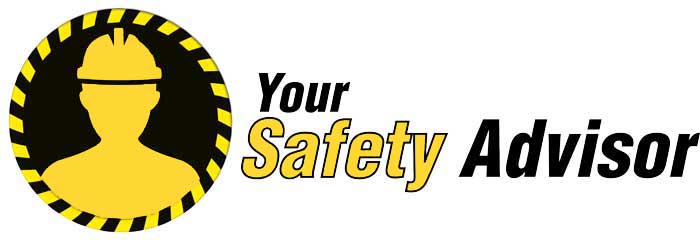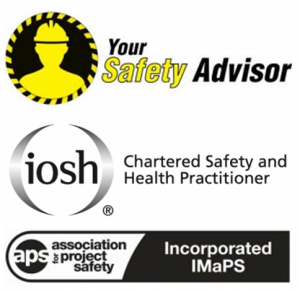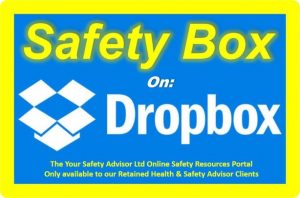Frequently Asked Questions
If you have any questions about Health and Safety in the Building or Construction Industries, then check out our Frequently Asked Questions (FAQ’s) below. We will be adding more and more questions (and of courses the answers) over the coming weeks and months, so please keep checking this page. But if there is something you need to know the answer to now, which hasn’t been addressed below, then why wait, send us a message today.
Alternatively if you need more in depth help and assistance, check out the rest of our website and in particular our Retained Health and Safety Advisor Service, where we become ‘Your Safety Advisor’.
The Health and Safety Executive website is also useful resource, particularly if you need access to detailed legal information.
Frequently Asked Questions
Whether you have an existing arrangement with another Safety Advisor or you’re looking for someone new to help with your Health and Safety Responsibilities, Your Safety Advisor is here to help.
We work with you, we listen to you and provide you with the service you want and need. We are experts in the construction sector, we do not get involved with food safety; manufacturing or other non construction related sectors – that is not what we do. What we do offer is Expert Construction Safety Advice and Support to your business, we become ‘Your Safety Advisor’.
Furthermore we are Chartered Safety Practitioners, we are also Chartered Construction Professionals and Chartered Environmentalists, meaning we understand the industry.
Your Safety Advisor Ltd is not your average health and safety consultant claiming to be able to do everything, for anyone, in any industry, and then ends up failing to provide you with what you need. Instead, Your Safety Advisor Ltd only undertakes health and safety work in the construction industry and Your Safety Advisor Ltd prides itself on producing high quality, professional documentation and offering competent, professional advice to our clients.
Your Safety Advisor Ltd has extensive experience of working with small and medium sized contractors; sole traders and labour only sub-contractors. We become part of your team, we become ‘Your Safety Advisor’, working for you and helping to ensure you are aware of your duties/responsibilities and have the necessary documentation, policies and procedures in place.
Your Safety Advisor Ltd can also help by preparing your Risk Assessments; Method Statements; Safety Policy and by completing any Health and Safety Questionnaires or SSIP Assessments which may need to be completed.
For those clients that also retain our services as their nominated Health and Safety Advisors, we are also able to provide access to our innovative ‘Safety Box’ solution which provides our client with access to huge range of Health and Safety Publications; Standard Proforma’s and other useful guidance information. Full details of Safety Box can be found by clicking on the following image:
Safety Box is ONLY available through our Retained Health and Safety Advisor Service.
Essentially you are responsible for the health and safety of everyone affected by your business. This includes not only your employees but also others who may visit or work at your premises, such as customers, tradesmen, suppliers and delivery drivers. Additionally you have responsibilities to others affected outside of your premises (such as through noise and other emissions etc) and anyone affected by the products or services which you design, produce, construct or supply.
You are also responsible for the provision of adequate welfare facilities for your employees and subcontractors.
General requirements include:
- Having a Health and Safety Policy.
- Carrying out a Risk Assessment, and taking action to control any risks.
- Developing Safe Systems of Work also known as Method Statements.
- Providing adequate and sufficient training, instruction and information to your employees.
- Making suitable arrangements for employee welfare.
- Recording and documenting your safety systems and assessments where necessary
- Taking out employers’ liability insurance (unless all your employees are your close relatives).
- Having access to Competent Health and Safety Advice and Support for your business
Specific regulations cover areas such as providing health and safety information to employees, fire precautions, managing dangerous equipment and hazardous substances, providing a suitable working environment, and dealing with accidents and emergencies.
Furthermore the Construction (Design and Management) Regulations (CDM) place additional duties and responsibilities on all persons involved in the construction and building industries. Subscribe to our Retained Health and Safety Advisor Service to make sure you have the advice and support needed to protect your employees and your business.
For example, under the Construction (Design and Management) Regulations 2015, the duties of the Principal contractor also include:
- Plan, manage, monitor and coordinate the entire construction phase
- Take account of the health and safety risks to everyone affected by the work (including members of the public), in planning and managing the measures needed to control them
- Liaise with the client and principal designer for the duration of the project to ensure that all risks are effectively managed
- Prepare a written Construction Phase Plan before the construction phase begins, implement, and then regularly review and revise it to make sure it remains fit for purpose
- Have ongoing arrangements in place for managing health and safety throughout the construction phase
- Consult and engage with workers about their health, safety and welfare
- Ensure suitable welfare facilities are provided from the start and maintained throughout the construction phase
- Check that anyone they appoint has the skills, knowledge, experience and, where relevant, the organisational capability to carry out their work safely and without risk to health
- Ensure all workers have site-specific inductions, and any further information and training they need
- Take steps to prevent unauthorised access to the site
- Liaise with the principal designer to share any information relevant to the planning, management, monitoring and coordination of the pre-construction phase
Yes.
All organisations, including Sole Traders need a Safety Policy, however if you have five or more employees, the policy must be in writing, and you must bring it to the attention of your employees. Even if you have less than 5 employees, it is still good practice to have a written health and safety policy. You will also find that many clients and main contractors will require you to supply a copy of your full Health and Safety Policy and Procedures Manual to them as part of their own vetting procedures. The same applies if you want to register with any of the SSIP Accreditation schemes such as CHAS; SMAS; SafeContractor; Exor; Altius; ConstructionLine etc.
It’s also essential that your Health and Safety Policy is kept up to date, it MUST be reviewed annually and updated/amended as needed. An out of date health and safety policy can be as bad as having no health and safety policy at all.
If you haven’t got a policy, or need a new Health and Safety Policy, then Your Safety Advisor Ltd can help, we can prepare your policy for you for a one off low fixed fee. Check out this page for more details: Health and Safety Policy and Procedures Manual
Your policy should detail your statement and general approach to health and safety, such as how you ensure the safety of equipment, create a healthy working environment, establish safety procedures, provide appropriate safety and job related training etc.
The Health and Safety Policy should details the way that you organise and manage health and safety and who is responsible for the implementation and management of different aspects of health and safety within the organisation. The Safety Policy should also detail your procedures for dealing with specific hazards and risks – for example, the use of plant and machinery; asbestos procedures; electrical safety; evacuation procedures; first aid arrangements etc.
A commitment to review the policy periodically and revise it as necessary must also be made, and the policy should be signed and dated by an appropriate senior member of the organisation.
To give you an idea of what your health and safety policy should typically include, the following list represents the contents of our standard Health and Safety Policy and Procedures Manuals:
Section 1 – General Statement of Health & Safety Policy
Section 2 – Organisation
Organisation
Implementation of the Policy
Monitoring Policy
Training
Purchasing Policy
Safety Committee and Employee Consultation
Communication of Health and Safety Information
Procedures for Co-operation and the Co-ordination of Contractors on Site
Section 3 – Responsibilities
- Directors
- Contracts Manager
- Office Staff
- Foreman
- Employees and Labour Only Contractors
- Contractors/Sub-Contractors
- Health and Safety Advisors
Section 4 – Arrangements & Procedures
- Abrasive Wheels
- Accident Reporting
- Alcohol and Drug Abuse / Misuse
- Asbestos
- Cartridge Operated Fixing Tools
- Communal Areas
- Company Offices
- Company Vehicles and Mobile Phones
- Compressed Air Power Tools
- Confined Spaces
- Construction (Design & Management) Regulations (CDM)
- Contractor Management
- Control of Substances Hazardous to Health (COSHH)
- Demolition
- Display Screen Equipment (DSE)
- Documentation
- Driving and Road Safety
- Dust
- Electrical Power Tools
- Electricity & Electrical Risks
- Emergency Procedures
- Fire Safety
- Health and Safety Signs
- Health Hazards
- Health Surveillance
- Highly Flammable Liquids (HFL’s)
- Ladders, Trestles & Staging
- Lead
- Lifting Operations
- Liquefied Petroleum Gas (LPG)
- Lone Working
- Management of Health and Safety at Work
- Manual Handling and Lifting
- Method Statements
- Mobile Access Equipment
- Noise
- Notifications
- Permit to Work
- Personal Protective Equipment (PPE)
- Protection of the Public
- Risk Assessment
- Roof Work
- Scaffolding
- Site Offices
- Site Tidiness & Housekeeping
- Tendering and Planning
- Vibration
- Violence and Harassment
- Welding & Cutting Operations
- Welfare & First Aid
- Work at Height
- Work Equipment
- Workplace (Health, Safety and Welfare) Regulations
- Young Persons
Appendix – Key Health and Safety Acts and Regulations
A risk assessment is the process of identifying potential health and safety hazards; who they may affect; the seriousness; and then assessing the likelihood of the hazard of the hazard occurring. both immediate hazards and potential long term hazards such as health effects must be considered. The purpose of the risk assessment is to then ideally eliminate the risk, or where this is not practical, to provide sufficient mitigation measures to manage and control the risks and subsequent likelihood of harm to your employees or others.
You are legally required to carry out a risk assessment and take steps to control any risks you identify. Risk assessments should be periodically reviewed or whenever circumstances change or if you have reason to believe the assessment is no longer valid.
What Is a Method Statement?
Method Statements or Safe Systems of Work, as they are also known, are hugely important when it comes to managing the health and safety risks associated with projects, and particularly works in the building and construction sectors. Method Statements go hand in hand with Risk Assessments and together are often referred to as Risk Assessment and Method Statement (RAMS).
A Method Statement or Safe System of Work should detail exactly how to carry out a task or activity safely, outlining how the risks and hazards associated with the works will be managed. Method Statements and RAMS really are an essential part of your Risk Management strategy.
The main purpose of a method statements is to detail the sequence of works that will be carried out and the how the safety control measures will be put in place to manage the identified risks. Method Statements should detail, but not be limited to the following:
- The site address
- The dates of the works
- The supervisors details
- The names of the operatives involved
- The key plant; materials and equipment needed to complete the works
- The specific safety training needed
- The emergency arrangements
- The PPE required
- The sequence of works
- Details of any Permits to Work
- etc……
Each task should be broken down into steps with the method statement describing how the works will be implemented whilst ensuring the identified hazards are being managed and controlled.
The method statement should also cover the hazards associated with by-products of tasks and activities. For example, if any waste is produced, the document needs to cover how to dispose of that waste safely.
What’s the Difference between Method Statements and Risk Assessments?
As the two most common health and safety documents, risk assessments and method statements are often confused with each other. While both documents aim to improve the safety of work sites, they’re not the same thing. Risk Assessments identify and assess the hazards and risks involved in projects and suggest control measures. Method statements expand on the control measures outlined in the risk assessment, detailing how, when and why you should implement measures.
Method Statements (and Risk Assessments) need to be reviewed and rewritten whenever tasks are carried out in a new location or new equipment or materials are introduced or when a change to the working method is proposed. If the factors affecting the health and safety of projects change, method statements need to be reviewed and updated to help ensure that the safety precautions remain relevant.
Why Are Method Statements Important?
Method statements are one of the main health and safety management tools used in the building and construction industry to help manage works and ensure the safety of those carrying out hazardous tasks and others who may be affected by their actions.
The development of Method statements or Safe Systems of work are particularly important in the building construction industry, as the works often involves hazardous activities such as work at height, use of hazardous substances; use of plant and machinery etc.
The occurrence of accidents and rate of fatalities in the construction and building sectors is three times higher than the all-industry rate. But with the implementation of proper health and safety management, the preparation of site specific Risk Assessments and Method Statements (RAMS), companies can control and manage the risks on site to help protect workers, site visitors and members of the public from harm.
Under the COSHH regulations, workplace exposure limits (WELs) are assigned to a large number of hazardous substances, which must not be exceeded.
Around 500 substances have WELs assigned to them and these hazardous substances could be chemicals, fumes, dusts or fibres. However, new workplace exposure limits are regularly introduce and a further 31 substances have been added to the list from 21 August 2018.
It’s essential that you make reference to the latest version of the HSE publication EH40 which will detail the current workplace exposure limits (WELs).
WELs are legal limits of exposure, averaged over a specified period of time. So within a period of time (often 8 hours, but sometimes as short as 15 minutes), you are only allowed to be exposed to a certain amount of a hazardous substance.
WELs apply to a lot of substances you will have heard of, such as arsenic, asphalt, carbon dioxide, carbon monoxide, cement, flour dust, gypsum, hardwood dust, limestone and petroleum fumes. But also some you might not be so familiar with, like piperazine dihydrochloride.
Substances which have been assigned a WEL include those that are carcinogenic or mutagenic could cause asthma and other substances that are of significant risk through high levels of inhalation.
Sometimes it’s not possible to eliminate exposure to a hazardous substance completely, even with controls like extraction, ventilation and PPE in place.
Exposure limits are in place to control the effects of substances, depending on the nature of the substance and the effects of exposure. Some effects require prolonged exposure, while others may be seen after brief exposures.
Yes. You must provide appropriate information, instruction and training to all employees and the need for the provision of new or additional training should be considered as part of your Risk Assessment process.
On 12 March 2015 the maximum fine for health and safety offences was increased from £20,000 to an unlimited fine and/or one year’s imprisonment if a case is heard by Magistrates. If heard in Crown Court, fines are unlimited and you could also face up to two years’ imprisonment. Fines can be imposed on a company and/or on individual officers of the company if both are prosecuted. Directors may also face a disqualification order preventing them from acting as a company director for up to 15 years.
If a person to whom the organisation owes a duty of care (such as an employee, or a customer) dies as a result of a gross failure in the way health and safety is managed by senior managers in your business, it may be guilty of corporate manslaughter.
The court will look at your systems and processes for managing safety and how these were implemented, and a failure will be treated as gross if it falls far below the standard that could reasonably be expected of your business. The penalty is an unlimited fine and the court may also make a publicity order, requiring the organisation to publicise the details of its conviction and fine.
We currently accept Visa and Mastercard Credit/Debit cards and BAC’s Payments/Bank Transfers. All payments are securely and safely processed using Stripe. Stripe is an industry leading provider of online payment processing systems powering many of the worlds largest online systems, it provides the technical, fraud prevention and banking infrastructure required to operate safe and secure on-line payment systems.





